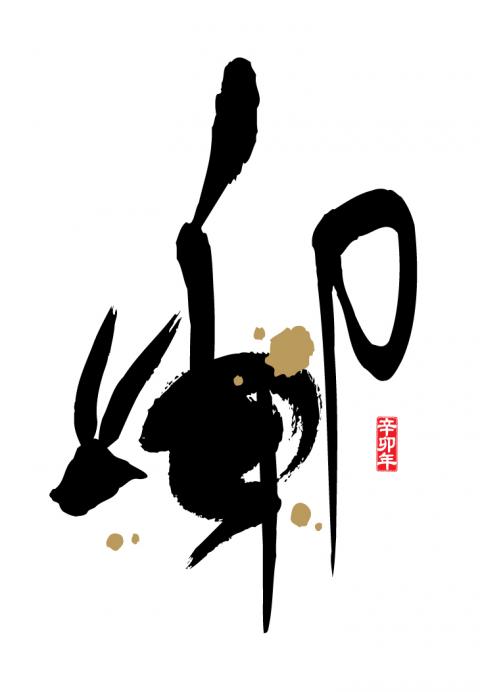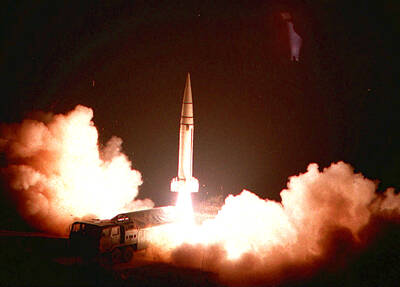Emerging from the fierce Year of the Tiger, the Chinese lunar calendar now enters the Year of the Rabbit (or Year of the Hare), and the imagery is certainly of a more peaceable nature, although much of the trauma from the Tiger still continues to cause havoc across the globe.
According to Suzanne White (www.suzannewhite.com), “high priestess of Chinese and Western astrologies,” 2011 will be a year of calm. “The emphasis will be on matters related to family, higher education and improvement of the world picture and the environment. Everything to do with culture with a capital C will be favored. Artists will produce masterful works and receive much public acclaim. Everything to do with peace and negotiation will get front page attention.”
Another Web site providing English-language information on various astrological issues, www.theholidayspot.com, largely concurs, proclaiming that the Year of the Rabbit will be “a placid year, very much welcomed and needed after the ferocious Year of the Tiger. We should go off to some quiet spot to lick our wounds and get some rest after all the battles of the previous year.”

Purely from a meteorological point of view, the Tiger seems to be going out with a destructive swipe of his tail, and it will take some months in the hopefully placid Year of the Rabbit to recover from the damage done by floods and snow around the globe.
The nature of the rabbit seems to suggest all sorts of good things, among them fecundity and peace, but in a note of warning, those who calculate the fortunes of the coming year also suggest there is a danger of laxity and that the rabbit’s calm could easily degenerate into a state of somnolence in which new terrors could arise.
But putting aside the destruction of extreme weather and the dangers of a lack of appropriate vigilance, it is worth pointing out the symbolic importance of the rabbit in Chinese culture.
In addition to cuteness, the rabbit, for reasons that are not particularly clear, is credited with great wisdom and mystical properties best embodied in its role as the cosmic pharmacist based on the moon, who can be seen, given the correct meteorological conditions, preparing the elixir of eternal live.
The story of the rabbit on the moon goes back a long way in Chinese culture, first appearing in one of the seminal anthologies of ancient Chinese verse, the Chu Ci (楚辭), composed by Qu Yuan (屈原), the poet whose death is commemorated in the activities of the Dragon Boat Festival (端午節). That was back in the beginning of the third century BC. The images of the moon and rabbit in such a seminal work have given rise to a wealth of mythological speculations that have in their turn generated some of the best-loved Chinese folk tales.
One well-known tale is from the Buddhist Jataka stories, which purport to relate the many lives of the soul that eventually becomes the Buddha. It is told that in one of his many previous lives, the Buddha was born as a rabbit.
As a rabbit, he was virtuous, good, beautiful and vigorous. Among his companions were an otter, a jackal and a monkey. One day, when a starving holy man came their way and begged for alms, the rabbit realized he had nothing to give but the few bitter herbs he relied on for subsistence. His three companions had ample means to feed the guest. The otter was able to supply the man with fish, the jackal provided some milk and the monkey some ripe mangoes. Seeing that the man had built a fire, the rabbit explained that he was offering his own body and then, without hesitation, leapt into the hot coals and swirling flames. The holy man, rejoicing in this example of selfless generosity, raised this animal up to heaven, and the image of the rabbit remains visible on the moon today as an example to the rest of us.
The rabbit, raised up to the moon in this way, also became associated with the Chinese folk tale of Chang’e (嫦娥), or the Chinese moon goddess, who fled to the moon, and for whom the rabbit endlessly prepares a concoction that ensures her immortality. This association with immortality and permanence has been made famous in literature, most notably by the Tang Dynasty poet Li Po (李白), also known as Li Po, who used it ironically in his poem The Old Dust (擬古其九).
The living is a passing traveler;
The dead, a man come home.
One brief journey betwixt heaven and earth,
Then, alas! We are the same old dust of ten thousand ages.
The rabbit in the moon pounds the medicine in vain;
Fu-sang, the tree of immortality, has crumbled to kindling wood.
Man dies, his white bones are dumb without a word.
When the green pines feel the coming of the spring.
Looking back, I sigh; looking before, I sigh again.
What is there to prize in the life’s vaporous glory?
(English verse by Shigeyoshi Obata, from The Works of Li Po, the Chinese Poet)
(生者為過客,死者為歸人。
天地一逆旅,同悲萬古塵。
月兔空搗藥,扶桑已成薪。
白骨寂無言,青松豈知春。
前後更嘆息,浮榮安足珍。)
Li could get rather maudlin, so it might be as well to focus on the cuddly and lovable side of the rabbit for the year ahead. Leaving the last word to the high priestess of astrology, if you choose “to involve yourself [in peaceable projects], your year will go swimmingly. Should you choose otherwise and wax aggressive, antagonistic or pushy, you will be swimming upstream all the way.” In the hope of a prosperous and productive year, the Taipei Times offers its best wishes for the Year of the Rabbit.

This is the year that the demographic crisis will begin to impact people’s lives. This will create pressures on treatment and hiring of foreigners. Regardless of whatever technological breakthroughs happen, the real value will come from digesting and productively applying existing technologies in new and creative ways. INTRODUCING BASIC SERVICES BREAKDOWNS At some point soon, we will begin to witness a breakdown in basic services. Initially, it will be limited and sporadic, but the frequency and newsworthiness of the incidents will only continue to accelerate dramatically in the coming years. Here in central Taiwan, many basic services are severely understaffed, and

It is a soulful folk song, filled with feeling and history: A love-stricken young man tells God about his hopes and dreams of happiness. Generations of Uighurs, the Turkic ethnic minority in China’s Xinjiang region, have played it at parties and weddings. But today, if they download it, play it or share it online, they risk ending up in prison. Besh pede, a popular Uighur folk ballad, is among dozens of Uighur-language songs that have been deemed “problematic” by Xinjiang authorities, according to a recording of a meeting held by police and other local officials in the historic city of Kashgar in

Jan. 5 to Jan. 11 Of the more than 3,000km of sugar railway that once criss-crossed central and southern Taiwan, just 16.1km remain in operation today. By the time Dafydd Fell began photographing the network in earnest in 1994, it was already well past its heyday. The system had been significantly cut back, leaving behind abandoned stations, rusting rolling stock and crumbling facilities. This reduction continued during the five years of his documentation, adding urgency to his task. As passenger services had already ceased by then, Fell had to wait for the sugarcane harvest season each year, which typically ran from

The People’s Republic of China (PRC) was out in force in the Taiwan Strait this week, threatening Taiwan with live-fire exercises, aircraft incursions and tedious claims to ownership. The reaction to the PRC’s blockade and decapitation strike exercises offer numerous lessons, if only we are willing to be taught. Reading the commentary on PRC behavior is like reading Bible interpretation across a range of Christian denominations: the text is recast to mean what the interpreter wants it to mean. Many PRC believers contended that the drills, obviously scheduled in advance, were aimed at the recent arms offer to Taiwan by the